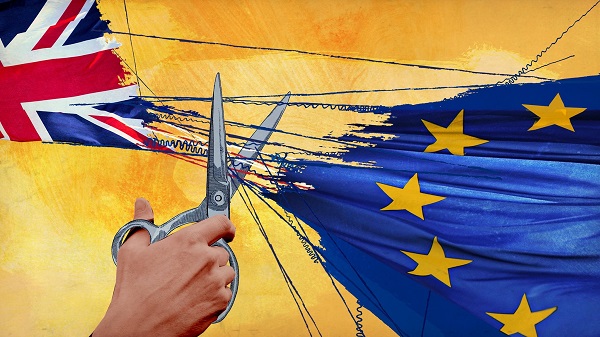
Sidebar
The Brexit procedure
The United Kingdom exit procedure follows the referendum of June the 23rd 2016, in which 51.89% of voters voted to pull back their country from the European Union and Euratom. It takes place in accordance with the procedure laid down in Article 50 of the Treaty on the European Union and started on March the 29th 2017 when the British Government formally announced to the European Council its intention to leave the Union. The exit of the European Union must lead to the negotiation of an exit agreement and a trade agreement. The European side wants the exit agreement to be sufficiently advanced before trade negotiations are opened. The British side would like to negotiate these two agreements simultaneously.
In December 2015, the British Parliament adopted the European Union Referendum Act, which provided for the holding of a referendum on June the 23rd 2016.
![]()
Consequences of the referendum
On June the 25th 2016 Didier Seeuws was appointed to head the “Task Force on the United Kingdom” within the General Secretariat of the Council of the European Union in order to coordinate the negotiations between the United Kingdom and the European Union.
In July 2016, David Davis became Secretary of State for the European Union in charge of the Brexit and Boris Johnson Secretary of State for Foreign Affairs.
Michel Barnier was chosen in July 2016 by Jean-Claude Juncker, President of the European Commission, to lead negotiations on the exit of the UK from the EU. On October the 1st, Michel Barnier took office; he is assisted by Sabine Weyand, previously Deputy Director General for Trade. It is expected that during the negotiations their group will deal with three themes: the internal market and cross-cutting issues; the budget and financial matters; trade and external relations. Stéphanie Riso is head of a strategy, coordination and communication group, composed of a diplomatic advisor, a legal advisor, and a communications advisor. The European Union team organized a tour of the 27 capitals before the end of December 2016. The tour targeted two to three countries a week, starting with Berlin, The Hague, Bucharest, Warsaw, and Dublin.
Preparation and preliminary discussions
According to Ivan Rogers, negotiations can begin with talks aimed at defining the terms of the negotiations. In particular, the 27 countries of the European Union want a separation agreement before reaching an agreement on future relations, while the UK could imagine being able to negotiate the two in parallel. Further negotiations could be interrupted by elections and budget issues. The remaining time could be used to discuss a transition phase. According to him, key people do not imagine that agreement can be reached on the future of relations between the EU and the UK before 2022.
Negotiations timetable
According to internal European Commission information, European Union chief negotiator Michel Barnier considers that the agreement on the three points will allow the start of the “second stage” of the negotiations on the framework of future relations between the Union and the United Kingdom opening up the prospects for a post-Brexit free trade agreement and ‘transitional arrangements’.

Mr. Barnier’s provisional timetable provides for:
An agreement on the first phase “between October and December 2017”, then a launch of the “second stage” between “December 2017 and spring 2018” and then a “finalization” of the exit agreement “around October 2018”.
The remaining six months, before March 2019, will allow completion of the process of ratification of the separation agreement.
















0 comments